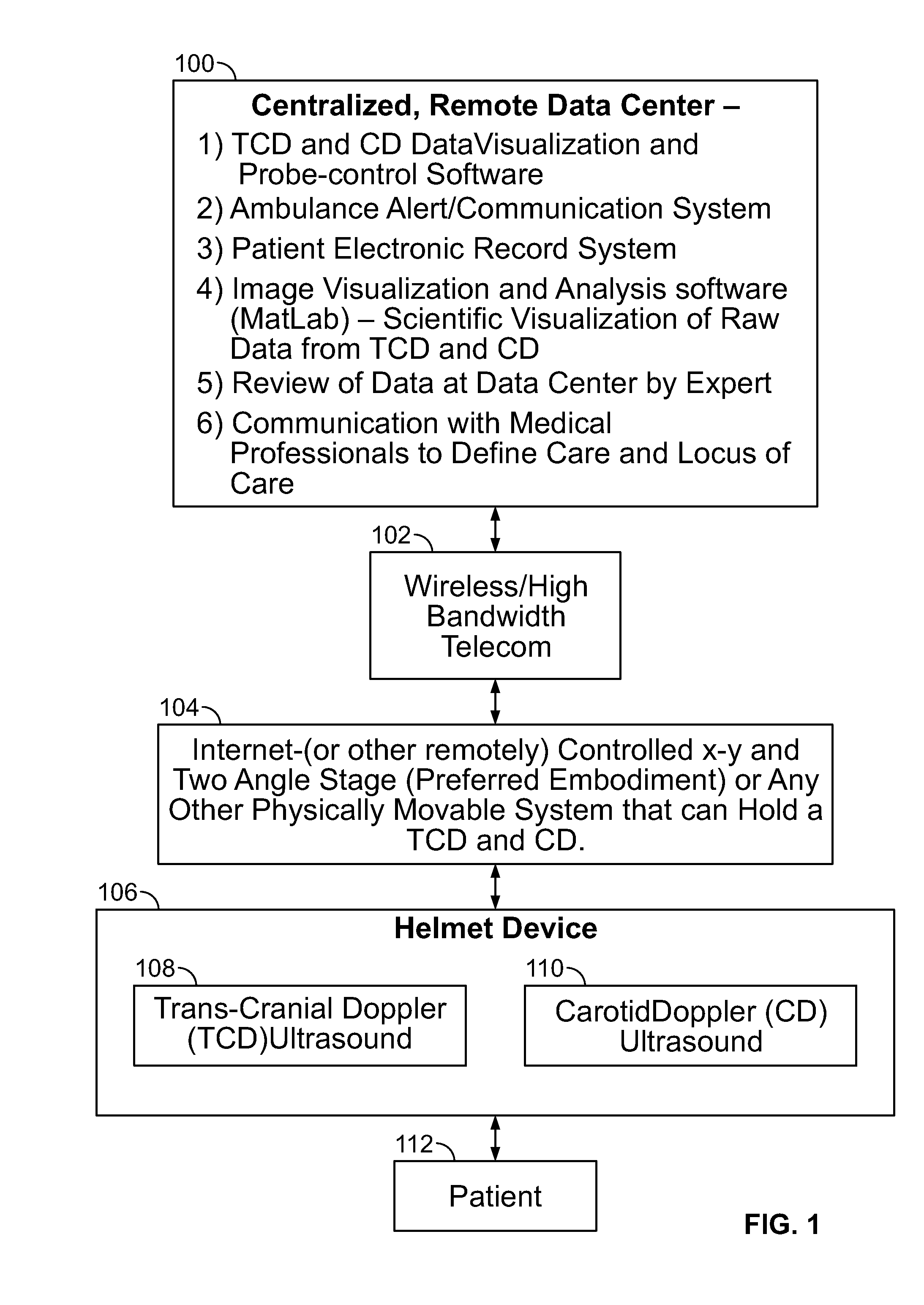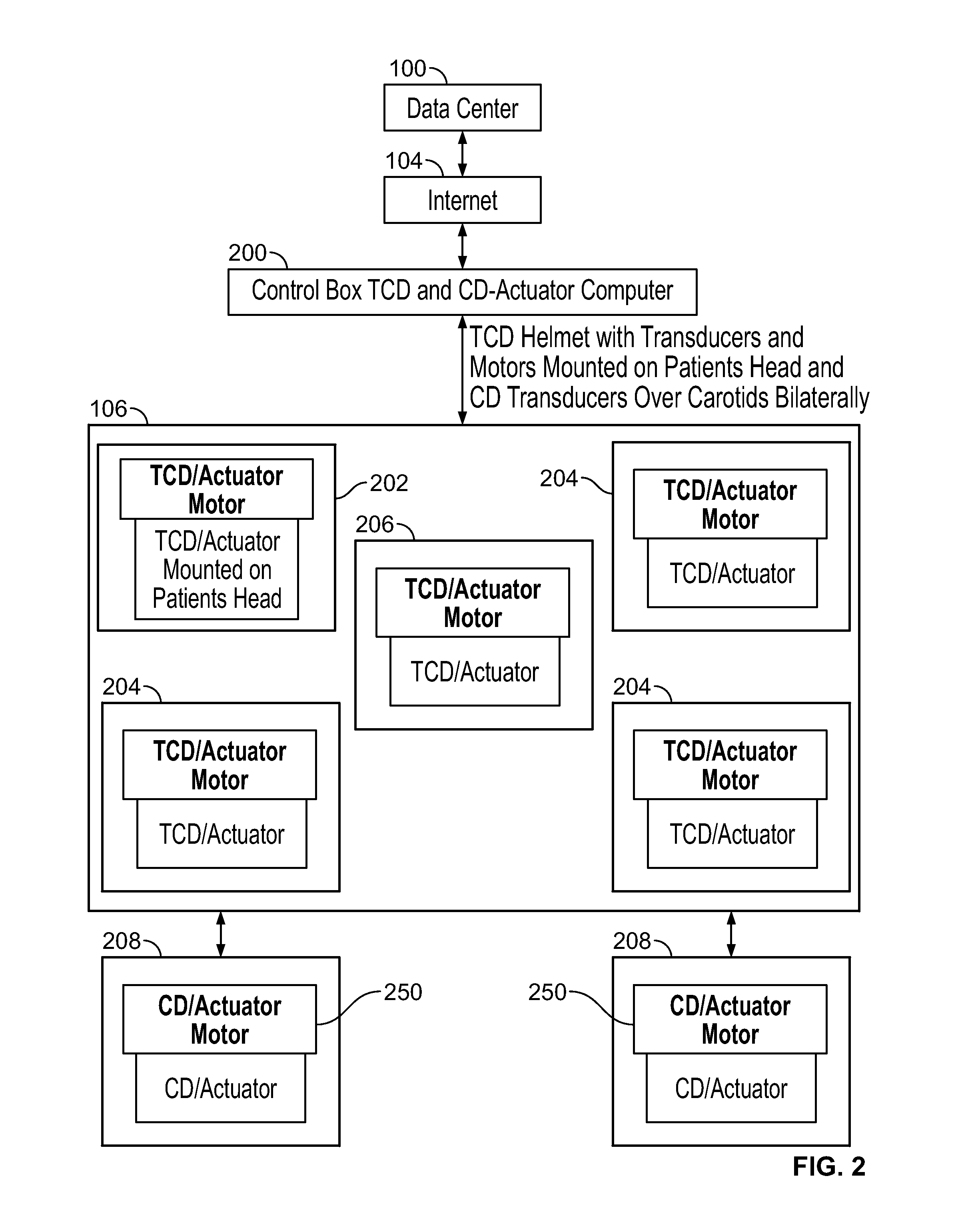Emboli detection in the brain using a transcranial doppler photoacoustic device capable of vasculature and perfusion measurement
a technology of transcranial doppler and photoacoustic device, which is applied in the field of medical imaging, can solve the problems of cerebral ischemia or stroke, many current transcranial imaging devices are severely limited, and the cost of brain blood vessel imaging by magnetic resonance and computed tomography is high, so as to improve the accuracy of diagnosis and treatment, the effect of rapid determination of stroke and related brain insults and injuries
- Summary
- Abstract
- Description
- Claims
- Application Information
AI Technical Summary
Benefits of technology
Problems solved by technology
Method used
Image
Examples
Embodiment Construction
[0083]Briefly stated, a device, method, and system for detecing emboli in the brain is disclosed. The transcranial Doppler photoacoustic device transmits a first energy to a region of interest at an internal site of a subject to produce an image and blood flow velocities of a region of interest by outputting an optical excitation energy to said region of interest and heating said region, causing a transient thermoelastic expansion and produce a wideband ultrasonic emission. Detectors will receive the wideband ultrasonic emission and then generate an image of said region of interest from said wideband ultrasonic emission. A Doppler ultrasound signal will also be deployed to image the region of interest. Another embodiment Doppler would present blood flow. Additionally, a dye can be given to visualize the brain vasculature and a perfusion measurement can be made in various regions of the brain along with the transcranial Doppler and the photoacoustic screening.
[0084]Methods and appara...
PUM
 Login to View More
Login to View More Abstract
Description
Claims
Application Information
 Login to View More
Login to View More - R&D
- Intellectual Property
- Life Sciences
- Materials
- Tech Scout
- Unparalleled Data Quality
- Higher Quality Content
- 60% Fewer Hallucinations
Browse by: Latest US Patents, China's latest patents, Technical Efficacy Thesaurus, Application Domain, Technology Topic, Popular Technical Reports.
© 2025 PatSnap. All rights reserved.Legal|Privacy policy|Modern Slavery Act Transparency Statement|Sitemap|About US| Contact US: help@patsnap.com



